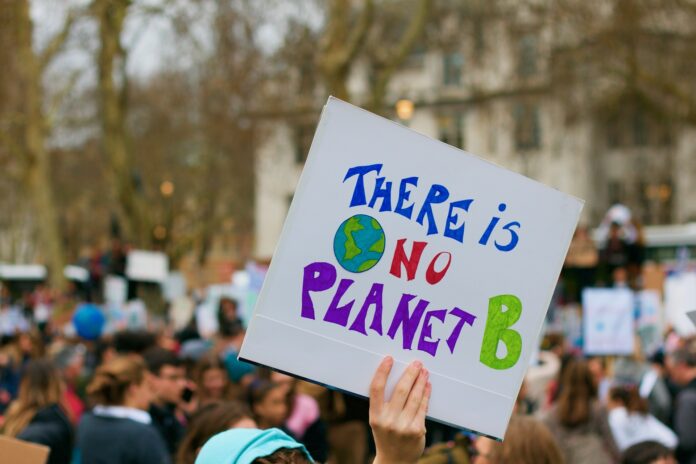Instinctively, as human beings we always want to feel safe from potential threats that our ecosystem relies upon. Nobody likes to feel vulnerable.
In the context of climate change, Kenyans may not realize the magnitude of this silently creeping phenomenon that will be a problem for years to come if not dealt with urgently.
Climate change is a major risk to development, especially for growing economies. In Kenya, the government has received support from multinational organizations, such as WorldBank, to invest and build a low-carbon, climate resilient future.
Safe to say, the future is a projection of our present actions in what we need to do to implement these strategic climate risk profiles.
In this article we shall take a look at things businesses can do to aid in long-term climate risk management.
To get started, here are 10 carbon terms to know to spur climate change knowledge at all operational levels of a business:
1. Carbon Credits
These are a form of financial incentive given to companies so that they can reduce their emmissions. They are units that represent the right to emit one ton of C02e
Alternatively, they serve as a means to help companies invest in projects that remove carbon emmissions from the atmosphere.
2. Carbon Emmissions
This is the release of carbon dioxide and other greenhouses gases (GHGs) into the atmospehere. Heard of global warming right?
Carbon and GHGs released into the atmosphere trap heat, causing the earth’s atmospheric temperatures to increase.
Global warming occurs, subsequently vindicating why carbon emmissions are a major contributor to climate change.
Businesses should aim at reducing carbon emmissions which pose a major unforeseen risk. Compliance with set regulations is essential in mitigating risks associated.
Take an example, a business located in Mombasa may face damage from extreme weather events/their water resources can be affected by climate change. All to say, it begins with reducing carbon emmissions
3. Carbon offsets
Carbon offsets are ways of compensating for carbon emmissions in the atmosphere by investing in green projects.
Businesses have a responsibility to reduce their carbon footprint and contribute to the fight against climate change.
Anita Soina: How 23-year-old Kenyan became global climate change leader
This can be through ways such as planting trees or investing in renewable energy. When businesses purchase carbon offsets, they are essentially paying to reduce emmissions.
This can help in achieving economic sustainability goals and reduce risk of climate related liability.
4. Carbon Tax
This is an environmental tax/penalty regulated by the government that organizations have to pay for excessive production of carbon dioxide and GHGs.
You guessed it right; this tax is designed to discourage use of fossil fuels and encourage development of cleaner energy.
For businesses, this has a significant impact on their bottom lines and pose a great unforeseen risk to their operations.
For example, a high carbon tax could make it more expensive to produce products, leading to higher prices for consumers.
They will move to a cheaper competitor, who invested in new technologies to reduce carbon emmissions and hence gets a smaller penalty.
5. Carbon Sink
This is a natural or engineered resource that has the ability to absorb carbon dioxide from the atmosphere. For example, trees. Carbon sinks plays an important role in the carbon cycle.
From a business perspective, businesses can support tree planting programs as a form of Corporate Social Responsibility. Additionally, they could also donate money to organizations that plant trees.
6. Carbon Neutral
Carbon Neutrality is the state of having net-zero carbon emissions. This is achieved by reducing emissions as much as possible and then offsetting remaining emissions.
It is an important goal for businesses in mitigating climate change and protecting the environment, as we know it today, for our future generations.
7. Carbon Dioxide Equivalent (CO2e)
This is a metric used to calculate all GHG emissions Global Warming Potential (GWP) relative to Carbon dioxide. Simply put, CO2e is a tool for understanding and addressing climate change.
8. Carbon Market
Recall reading on Carbon Credits? A carbon market is a system for trading carbon credits. Carbon credits can be traded between businesses, governments, and individuals.
They are two main types of carbon markets; compliance markets/cap-and-trade markets and voluntary markets.
Lack of Climate Adaptation investment could cost emerging markets hundreds of billions by 2030
Carbon markets help reduce GHG emissions by providing businesses with an incentive to reduce their emissions. By trading carbon credits, businesses reduce their emissions and still meet their environmental goals.
They are also a way to raise money for climate change mitigation and adaptation projects.
9. Carbon Registry
This is an organization entrusted with the role of tracking and managing carbon credits in a transparent and accountable way.
They are used in a variety of contexts such as compliance markets, voluntary markets and offsetting programs.
10. Carbon Accounting
Carbon accounting is the process of measuring, monitoring, and reporting greenhouse gas emissions. It is used to track the emissions of businesses and governments.








